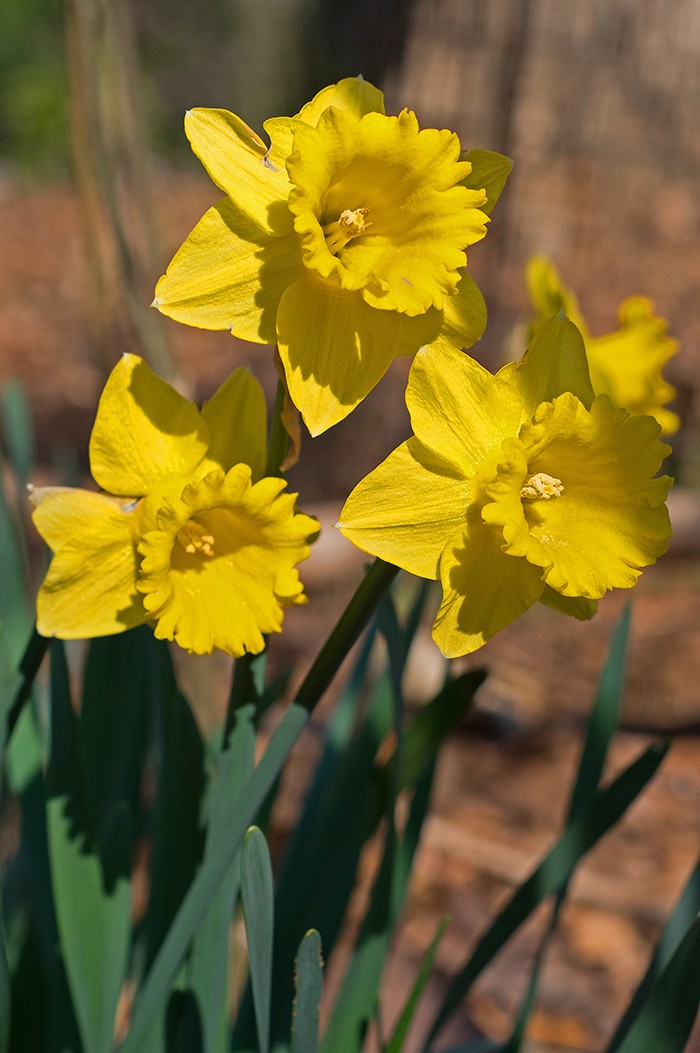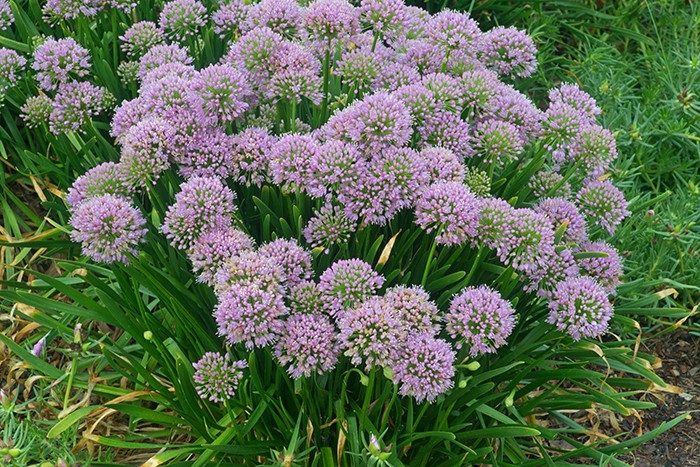Millenium — if I had spelled this word that way on any of my eighth-grade English papers, a grade far south of “A” (a.k.a., 4.0) would have surely followed. But I’m a big boy now, and I can spell it any way I wanna.
Actually, ‘Millenium’ is not a spellcheck error waiting to happen but rather the name given by plant breeder Mark McDonough to an outstanding ornamental onion he introduced in 2000. Even though it has been around since the beginning of this millennium, ‘Millenium’ has only recently caught the attention of the general gardening public.
What really shined a light on ‘Millenium’ was it being named the Perennial Plant Association’s 2018 Perennial Plant of the Year. After that honor, this herbaceous charmer became an easier springtime find in many garden shops. I’ve even seen it in full flowering flaunt at big box home improvement stores with nursery centers.
The award was well earned. ‘Millenium’ is a compact cutie that has a foliage spread of only about 12 to 18 inches wide and tall. Sturdy, 18-inch-high stems support two-inch-diameter, round umbels bejeweled with masses of pinkish-purple florets starting in June when many flowering annuals and perennials begin to wind down in the building heat.
Another advantage of ‘Millenium’ is that it is a clump-forming perennial, spending more energy expanding by way of underground fibrous bulb reproduction than seed production, meaning it will behave better than many other ornamental onions that can sometimes seed about with impunity.
While you are admiring ‘Millenium’ in bloom, expect plenty of company from butterflies and bees. Conversely, don’t worry about deer and rabbits taking a culinary interest in this plant.
‘Millenium’ is happiest in full sun and resists drought, but placing it in a bed that has been well-worked with gobs of quality commercial garden soil or compost added will make for a healthier plant by providing an even supply of ground moisture through the long summer season. Fluffing the soil up with such organic amendments will also help it drain better — another plus because this ornamental onion doesn’t fare well in soggy sites.
Come the fall, ‘Millenium’ will pack it in for the growing season with its foliage flopping to a withered brown, which can then be cut back. If this pretty has grown beyond its bounds, or you simply want to spread its beauty around, late autumn is also a good time to dig up and divide the clump.

Daffodils
If you have been experiencing diminishing visual returns in an established daffodil bed the last few years, chances are this lessening of blooms is the result of overcrowding. Now is a good time to dig up, divide and separate the bulbs.
Since they are dormant, the bulbs can be stored in a cool, dry area until the fall when you typically plant new, store-bought batches of bulbs, but replanting now in well-amended soil after separating them will also work just fine. Extra nutrients are not necessary at this time — wait until autumn to apply a specialized time-release bulb fertilizer around the sleeping beauties.
To Do in the Garden
June
- Couldn’t part with your poinsettia last Christmas? Give it a vacation outdoors now in a semi-shady spot. Also, for a fuller, more compact plant, prune each branch back, leaving three to five leaves on each stem.
- Do something different for the gardening dad in your life this Father’s Day. Plant a specimen, unusual or hard-to-find tree, shrub or perennial in his honor.
July
- Better tasting — and least slimy — okra pods are best picked when they are about three inches long. And for little or no slime, leave the pods whole when boiling okra.
- Continue filling the bird bath with water at least once a week, and to keep this refreshment stand fresh. Also give it a good cleaning every two to three weeks.
- Meet Erin O’Loughlin
- Meet Andy Munn
- Meet Marsha McLean
- Meet Hillary Parnell
- Meet Matthew Poling
- Meet Tim McLoughlin
- Meet Calin Riley
- Meet Victoria Ford
- Meet Brianna Williams
- Meet Erin Bircher
- Bring the Magic
- Meet Evan Bost
- Meet the 2021 Movers & Shakers
- A Peek at the Peak City
- Meet Amy Davenport
- Meet Stephen Rhodes
- Meet Nicole Case
- Meet Camille Kauer
- Meet Alicia Jurado
- Meet Virginia H. Johnson
- Meet Sylvia Inks
- Meet Dr. April Gessner Deddens
- Meet Jasmine Brown
- Meet Mycal Brickhouse
- Meet Matthew Bettinger
- Meet Shane Barry
- ‘It just had everything’
- Small Business Spotlight: Blue Diamond Gemstone Panning
- Riding to Victory
- Nonprofit Spotlight: Spirit League of North Carolina
- Restaurant Profile: Keen on Korean
- Liquid Assets: Wen-da-Hell Hefeweizen from Bearded Bee Brewing
- Liquid Assets: Frozen Lavender Lemonade from Andia’s Homemade Ice Cream
- Garden Adventurer: ‘Millenium’ Allium is More Than a Spellcheck







